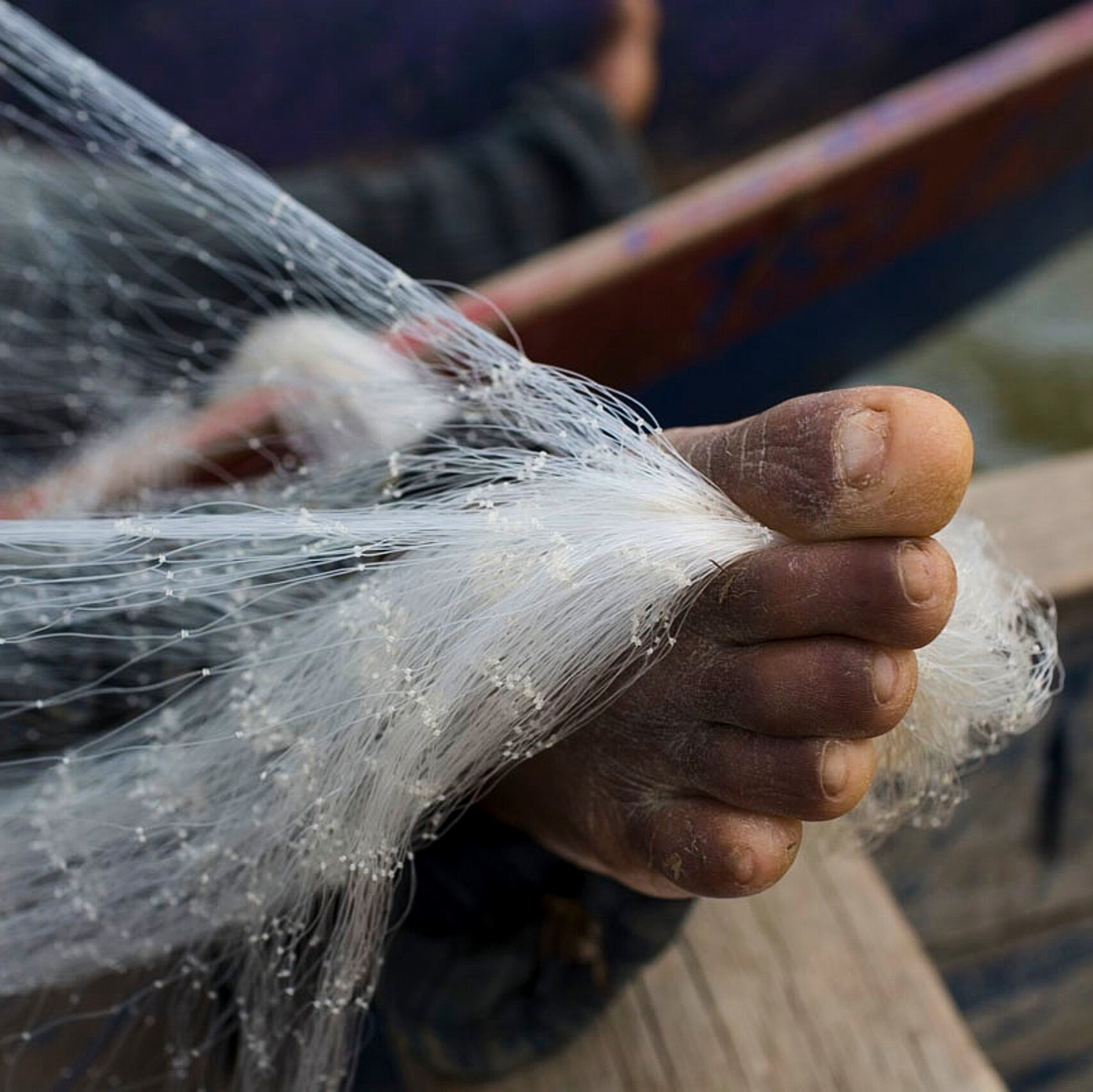Forced Labor
Forced Labor is an unfortunate reality faced by millions around the globe. Our goal is to provide individuals, businesses, and policy-makers with a comprehensive understanding of what it is, its implications, and viable solutions to combat this crisis. Here, we illuminate the hidden aspects of this global challenge, discussing its indicators, causes, and impact on human rights, economies, and global trade.
Forced labor refers to situations where work or service is extracted from any person under the menace of any penalty and for which the said person has not offered himself voluntarily. This does not include compulsory military service, normal civil obligations, penalties imposed by a court, action taken in an emergency, or minor communal services (FTS, 2021).
Forced labor is a pervasive issue that extends to every corner of the globe, trapping an estimated 27.6 million people in its ruthless grip (ILO, 2022). It can be found across various industries and sectors worldwide, from agriculture and construction to manufacturing and domestic work. Victims of labor exploitation can be subjected to inhumane working conditions, excessive working hours, physical and psychological abuse, restricted freedom of movement, and deprivation of basic needs. It’s a complex issue that involves multiple factors such as poverty, societal structures, lack of education and legal protection, among others.
It’s a clandestine operation lurking beneath our daily lives, embedded in many sectors that fuel the world economy.
Take for instance the cocoa industry, which produces a beloved global commodity, yet dark corners of its supply chain in West Africa are marred by child labor and exploitative labor practices.
The fishing industry is not immune either; with thousands of workers in Southeast Asia and beyond often working under deplorable conditions, caught in a vicious cycle of debt and exploitation.
Then there’s the plight of the Uyghur population in China, where an estimated one million Uyghurs are reportedly subjected to modern slavery and labor exploitation in sectors ranging from cotton production to manufacturing. This sobering overview only scratches the surface of the rampant forced labor issue. Despite its vastness, understanding its scope is the first step towards formulating effective solutions to eradicate this global crisis.
Million
Asia-Pacific
The Asia-Pacific region had the largest absolute number of forced laborers, accounting for 15.1 million of the global total. This is largely due to the size of the region’s population and the presence of industries that are high-risk for forced labor, such as fishing, textiles, and manufacturing.
Million
Europe and Central Asia
An estimated 4.1 million cases are found in Europe and Central Asia where forced labor is found across a range of sectors including agriculture, construction, domestic work, and the sex industry.
Million
Africa
Africa has 3.8 Million of the global total. Forced labor in this region is often connected to the agriculture and mining sectors, with cocoa, coffee, gold, and cobalt production being areas of concern. Moreover, conflict and political instability in parts of Africa can exacerbate the problem.
Million
Americas
In the Americas, around 3.6 Million people are subjected to forced laborer a significant proportion working in agriculture and domestic work.
Million
Middle East
The Arab states account for the remaining share (0.9 million) of forced labor victims, where forced labor is prevalent in the construction, domestic work, and sex industrys.
It is crucial to understand that these figures are estimates and actual numbers can be much higher due to the hidden nature of this crime. Also, forced labor is not confined to less developed countries; it can and does occur in developed nations as well, often within migrant, refugee, and other vulnerable populations.
Forced labor in the United States is a complex and pervasive issue that often remains hidden and unacknowledged. The exact scope of forced labor in the U.S. is difficult to quantify due to the clandestine nature of this crime.
Nevertheless, it is recognized as a significant problem. In the U.S. labor exploitation occurs in various sectors, including agriculture, construction, domestic work, and hospitality. It often involves the exploitation of vulnerable populations, such as undocumented immigrants, refugees, and victims of human trafficking.
Agriculture is a major area of concern due to its reliance on migrant labor. Workers are often subjected to inhumane conditions, excessive hours, and threats of deportation if they speak up. Similarly, the domestic work sector, which includes housekeeping and in-home caregiving, often involves underpaid or unpaid labor, poor living conditions, and excessive working hours, with limited legal recourse due to the private nature of the work.
Efforts to combat the problem in the U.S. include enforcing labor laws and standards, strengthening worker protections, and raising awareness among consumers and businesses about the importance of responsible supply chains. However, more progress is needed to fully address the issue.
The Uyghur Forced Labor Prevention Act was signed into law by President Joe Biden in the United States on December 23, 2021. It strengthens the enforcement of prohibitions against the importation of goods made with forced labor, particularly in relation to China’s Xinjiang region and its reported use of forced labor involving Uyghur and other ethnic minority groups.
The bill addresses the challenges of identifying and combating labor exploitation in complex global supply chains. It increases corporate accountability and transparency, requiring businesses to disclose more information about their supply chains and take more responsibility for preventing forced labor.
The Uyghur Forced Labor Prevention Act increases the powers of the U.S. Customs and Border Protection (CBP) to prevent the import of goods made by exploited workers. It introduces penalties for corporations that fail to ensure their supply chains are free from forced labor while strengthening international cooperation and diplomacy to address labor and human rights abuses.
Poverty and Economic Inequality
Many people living in poverty are driven to take up risky job offers in the hope of a better life. They may end up trapped in exploitative working conditions due to the lack of alternative sources of income.
Lack of Education and Awareness
Individuals who are not aware of their rights are more vulnerable to exploitation. Lack of education also limits access to decent work, making individuals more likely to fall into forced labor.
Migration and Human Trafficking
Legal and Institutional Weaknesses
Conflict and Political Instability
Conflict and political instability can lead to an increase in forced labor, as breakdowns in rule of law, violence, and economic instability make individuals more vulnerable to exploitation.
Discrimination and Social Inequality
Debt Bondage
Global Supply Chains
Free the Slaves adopts a comprehensive, whole of society approach to tackle the exploitation of workers globally. Our interventions span all societal levels, targeting a diverse range of sectors and industries. We aim to cultivate safe working environments, ensure fair wages, and reinforce legal protections for workers everywhere.
How Free The Slaves is combatting forced labor:
Community Mobilization
Free the Slaves works at the local community level, empowering vulnerable communities through education and awareness programs. These programs are designed to help people understand their rights and the risks of trafficking, providing them with the tools they need to access government services, advocate for their rights and legal protection, and resist enslavement.
Advocacy for Policy Change
We advocate for stronger anti-slavery legislation and policies at both the national and international levels. This includes promoting better enforcement of existing laws and the creation of more robust policies to prevent and combat labor exploitation.
Corporate Engagement
The organization works with businesses to help them understand how forced labor can infiltrate their supply chains and develop strategies to eliminate it. They promote fair trade and responsible business practices.
Strengthening Civil Society and Supporting Survivors
Free the Slaves collaborates with other NGOs and local partners to create a network of support for victims. They also help survivors of slavery with economic and social reintegration, providing access to social services, mental health support, legal aid, and vocational training.
Education and Training for Law Enforcement
Free the Slaves provides training for law enforcement officials and judicial actors, aiming to increase the effectiveness of responses to cases of forced labor. This includes building capacities to investigate cases, support victims, and prosecute offenders.
Research and Documentation
Free the Slaves conducts research to understand the causes and consequences of slavery better, using this knowledge to inform their programs and influence policy.
Will you take a stand against forced labor?
Subscribe to Free the Slaves’ email newsletter today.



